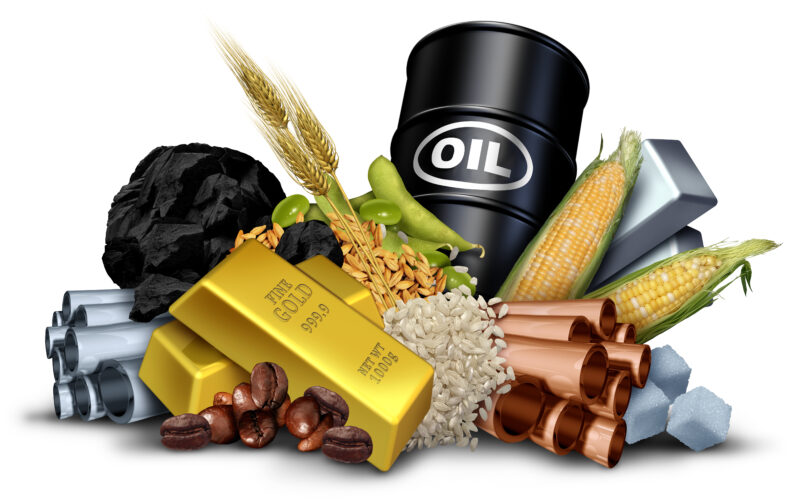The commodity derivatives market plays a pivotal role in the country’s financial infrastructure, enabling price discovery, hedging, and risk management for agriculture as well as non-agriculture commodities. The year 2025 is a special year for the Indian commodity derivatives market, as it marks 150 years since the inception of formal and structured trading in India.
A rewind
Organized commodity exchanges have a long history, and the first organized futures market is considered to be Dojima Rice Exchange in Japan, established in 1697. Later, Chicago Board of Trade (CBOT) in the US and London Metal Exchange (LME) in the UK began its Anu V. Pai operation in 1848 and 1877 respectively. In India, more formalized trading began in 1875, shortly after the establishment of CBOT, with the setting up of the Bombay Cotton Trade Association. However, it is believed that the concept of commodity derivatives trading existed in India during ancient times even before it began in many other countries. Kautilya’s “Arthashastra”, a Sanskrit treatise on statecraft, economic policy, military strategy, and politics, mentions a system similar to the current day futures market in agriculture produce, precious metals and animals. Following the establishment of Bombay Cotton Trade Association, which basically dealt with trading in cotton, derivatives trading of several other commodities like oil and oilseeds, gold and silver, wheat, rice, sugar, jute etc. began with similar exchanges being set up across the country.
A rapid growth was witnessed in futures market, especially during the period between first and the second World Wars. However, from Second World War until early 2000s it was a roller coaster ride with suspensions/ban or reintroduction in derivatives trading in a number of commodities and establishment of a number of regional exchanges. Fears over shortage of essential commodities during the period of Great Depression and World War-II lead to a virtual ban on futures trading in multiple commodities. Fears over shortage of essential commodities during the period of Great Depression and World War-II lead to virtual bans on futures trading in multiple commodities.
The post-Independence, Forward Contract (Regulation) Act was enacted in 1952, and Forwards Market Commission (FMC) was established in 1953 to regulate the commodity derivatives market. Persistent concerns over the availability of essential agriculture commodities led to bans on futures trading in most of the commodities by the 1960s. Later, recommendations by Kabra Committee of 1993 and the announcement of National Policy on Agriculture in 2000 provided momentum for reintroducing futures trading in agricultural commodities.
During 2002–03, significant developments took place in the commodity futures market. The Government of India lifting and easing restrictions on derivatives trading in commodities paved the way for the establishment of national level exchanges, aimed at creating a healthy and efficient market structure. The government recognized National Multi-Commodity Exchange of India Limited (NMCEIL), Ahmedabad, in 2002, and Multi Commodity Exchange (MCX), Mumbai and National Commodity and Derivatives Exchange Limited (NCDEX), Mumbai, in the year 2003. The commodity derivative market in the country subsequently witnessed exponential growth. The total turnover of derivatives trading increased from Rs. 1,294 billion to Rs. 280633 billion from 2003–04 to 2022-23.
Later, merging of FMC with Securities Exchange Board of India in 2015 and the introduction of commodity options trading in 2017 turned out to be a game changer for commodity derivative trading in the country. Apart from a considerable increase in commodity derivative turnover, number of regulatory changes are enhancing the overall development with the notable changes being: expanding participant base by allowing certain institutional participation like Alternative Institutional Fund, mutual funds and portfolio managers, providing direct market access to foreign portfolio investors in exchange traded commodity derivatives, introducing new product segments like commodity options on goods, commodity options of futures, index derivatives, and expanding the list of goods notified under Securities Contract Regulation Act 1956 to 104 from 91 etc.
Current landscape
Currently four national level exchanges- Multi Commodity Exchange (MCX), National Commodity and Derivatives Exchange (NCDEX), BSE and NSE, facilitate trading in a diverse range of commodities. These include agriculture commodities like spices, guar, cottonseed oil cake etc., and non-agriculture commodities like bullion, base metals, crude oil and natural gas.
According to SEBI, the pan-India turnover in commodity derivatives segment stood at Rs 280.6 lakh crore in 2023- 24 an increase of 86.9 percent on year-on-year basis. Among exchanges, MCX contributed 98.5 percent to the overall commodity derivatives turnover, while NCDEX and NSE contributed 0.73 percent and 0.72 percent respectively. Segment-wise, in 2023-24, the non-agri segment recorded turnover of Rs.278.5 lakh crore, an increase of 88.4 percent from Rs.147.8 lakh crore during the previous year. On the other hand, agri-segment turnover was Rs.2.1 lakh crore, a decrease of 8.1 percent over the turnover of Rs.2.3 lakh crore recorded during the previous year. The share of agri-segment in commodity derivatives trading has been declining. It constituted about 68 percent in 2004-05, and now it has been notably reduced to 0.8 percent in 2022-23. In the meantime, share of non-agri segment increased 99.2 percent during 2023-24 from nearly 32 percent in 2004-05. In the meantime, there has been a significant increase in share of options contracts being traded. In 2023-24, out of total commodity derivatives turnover, futures segment contributed only 18.5 percent as compared to 41.6 percent in 2022-23, while options segment accounted for 81.5 percent of the total turnover, up from 58.4 percent in 2022-23, SEBI data showed.
Challenges and potential
Despite India being ranked among the top ten commodity derivatives market in the world, it can be said that its growth still continues to be in a nascent stage. India being a major producer/consumer of many commodities, especially agriculture commodities, mostly remains a “price-taker”. It continues to face a series of challenges hindering its expansion. Frequent policy revisions, restrictions on participation by institutions like banks, commodity-specific regulations/ controls due to its nature, lack of liquidity in certain commodities due to limited participation as well as fragmented spot market, storage and logistics issues etc. are impacting the full development of the market.
Commodities derivatives trading in India holds immense potential. To realize this potential, the Indian commodity derivatives market needs to make strategic improvements in price discovery mechanism, increasing awareness, reducing transaction costs, improving infrastructure and simplifying regulations. By addressing these challenges, India can transform its commodity derivatives market into a more robust, efficient, and stakeholder-beneficial ecosystem.







